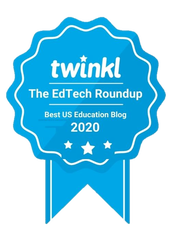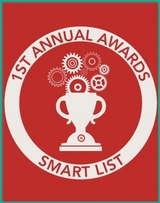
As coined by the Joan Ganz Cooney Center, a nonprofit literacy and digital media research organization, it is truly the "Digital Wild West" in the app world with millions of apps to choose from and more than 100,000 labeled as “educational.” But one app, Learn With Homer, the #1 Learn-to-Read app, is one of the few that has been proven in a double-blind study to help children learn to read and increases their proficiency by 74 percent in six short weeks.
- An explicit learn to read program
- An extensive e-book library
- Leveled fluency readers
- Nursery rhymes and music
- History, social studies and geography
- Exclusive museum field trips
- Science
- Student progress tracking
- A family share network
- Common core standards
- A proven efficacy through a blind research study
“In America alone, two out of three children never learn to read well, even though a child’s reading level by third grade is the single biggest predictor of future academic success. The biggest predictor, bar none,” said Stephanie Dua, founder and CEO of Learn With Homer. “We set out to create a digital program that could help solve the literacy crisis. Before we created Learn With Homer, we surveyed the consumer and educational marketplaces in search of digital resources that could teach children to read without the need for constant adult supervision and were surprised to find nothing available. Consumer products were short on pedagogy but long on fun. School products were long on pedagogy but devoid of engagement for young children. With that in mind, we built Learn With Homer on a program that combines research and game design to teach reading from start to finish.”
Learn With Homer’s effectiveness in teaching children to read has been well documented in a randomized double-blind study conducted by Susan B. Neuman, former U.S. assistant secretary of Education, professor of Early Childhood and Literacy Education at New York University. The study indicated measurable effects for children’s growth in phonological awareness and in developing an understanding of the speech-to-print connections in early literacy development. Children in the study group exceeded those in the control condition in three areas in particular: print knowledge, phonological awareness, and letter sounds. For the treatment group specifically, children made statistically significant gains in all skills measured. These results indicate that Learn with Homer significantly increased early literacy scores by 74 percent in the six week period.
Dr. Neuman attributed the success of Learn With Homer to several factors:
- the program used animation and audio to model the precise sounds of each phoneme - the sounds letters make - and relies on voice recording by the child. So children are able to hear the sounds of letters, see the movements of the mouth as it makes the sound, then to record themselves making the sound and to play that back.
- Learn with Homer's native mobile design integrates the best early literacy pedagogy and the best of game design to create a seamless learning experience for children. The students thought they were playing a game when really, every activity was carefully designed to result in maximum learning.
- Dr. Neuman calls phonics "the vitamin pill of instruction...It's necessary but not always very much fun." Because Learn with Homer uses game design to engage children, they are more motivated to stick with the difficult task of learning to read.
When it comes to screen time, research has started to focus on how digital technology can be used to help with learning. Some findings discovered:
- Total screen time isn’t the best metric. Focus on quality rather than quantity. Look at how children interact with tech tools and games.
- How much guidance is required of parents? Parents that play alongside their children can provide great support and help children achieve learning goals at a higher level, but children should also be able to navigate the app themselves.
- Do your homework: Read reviews on sites like Children’s Technology Review and Common Sense Media
A report entitled Pioneering Literacy in the Digital Wild West by the Campaign for Grade-Level Reading shows that most of the skills targeted by children’s reading apps are very basic and do not address higher-level competencies that young children need to become strong readers. “Technology changes so quickly that browsing the app store can feel like a digital version of entering the Wild West,” the report notes. “Parents and educators face a fast-growing array of products purporting to help their children learn to read but receive little information on how or if these products live up to their claims.”
Learn With Homer was developed by educators and literacy experts and built on leading scientific research by the National Reading Panel and is one of the most comprehensive foundational phonics-based reading system available on mobile and the web. It has received a five-star rating from Common Sense Media and is the winner of the Teacher’s Choice Award.
“Technology and learning go hand-in-hand today,” noted Dua. “Kids know how to use apps on phones and tablets from a very early age, so our goal was not only to create the first comprehensive literacy app, but also to deliver for parents and educators what we know to be the best practices in early education in a way that was beautiful but not over gamified.”
About Learn With Homer
Learn With Homer set out to solve a confounding problem: teaching the world’s children to read. As parents, Learn With Homer co-founders were trying to teach their own children but were bewildered by the morass of apps, flashcards, and books on the market, none of which were able to teach their kids to learn to read from start to finish. In the United States alone, two out of three children never learn to read well, even though a child’s reading level by third grade is the single biggest predictor of future success - the biggest predictor, bar none. Learn With Homer was started to give kids everywhere a better future —with a vision to transform the academic trajectory of every child who uses our product. Homer is a disruptively affordable, simple-to-use, start-to-finish reading program that children can do on their own. And it’s available to everyone with a phone in their pocket. To learn more, visit learnwithhomer.com or download from the iTunes app store or follow on Facebook, Twitter, YouTube and G+.












